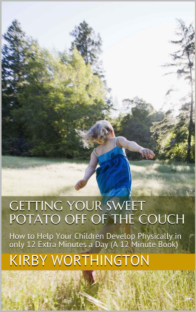How to Help Your Distractible Child Follow Directions
 Does this sound familiar?
Does this sound familiar?
"Evan, put on your pajamas."
"Take off your pants and put on your pajamas."
"Evan, put down your LeapReader and put on your pajamas!"
"Evan, what are you supposed to be doing right now?"
"I don't know."
Preschoolers, and even many elementary schoolers, are highly distractible, and that can make it hard for them to follow your directions in a prompt manner. This can be frustrating for parents, who just want their kids to do what they ask! Here are some strategies for working with a distractible child to maximize cooperation.
Give a heads up. A few minutes before you want an instruction carried out, let your child know what's coming. Say, "In five minutes, when the timer goes off, it will be time to stop what you're doing and get your pajamas on." This is especially true if your child is absorbed in an interesting activity.
Make sure you have their attention. When the timer has gone off, say your child's name and make sure you have eye contact before you give an instruction.
Give one instruction at a time. If you need your child to put on his pajamas, brush his teeth, and go potty, don't tell him all those things at once. Just tell him what he needs to do first. Little kids can't hold a series of instructions in their minds.
Have them repeat back your instructions. Kids are more likely to follow through on an activity if they say back to you what they're supposed to do.
Break down steps. We are often unaware of the many steps involved in completing a simple (to us) task. You may not be able to just tell your child to change clothes. You may need to break the task down into "Take off your clothes. Put them in the hamper. Get out your pajamas. Put on your pull-up. Put on your pajamas." Then give only one command at a time.
Stay involved. As much as you would like to send your child up to change clothes while you continue to wash the dishes, that may not be a recipe for success. When you tell your daughter to put on her pajamas, don't do the job for her, but stay close by, giving each new instruction as she completes the one before. You'll have to stay involved in the process until she has consistently demonstrated the ability to stay on task.
Make a chart, list, or cue cards. For regular jobs or routines, like getting ready in the morning or getting ready for bed, you can make a chart with all the required tasks. Take pictures of your child doing each item, and put the pictures in order on a chart. Or put the pictures on index cards and lace them onto a key ring. Once your child can read, the list can be words instead of pictures. You'll still need to help your child focus on each item on the list until they show you that they can follow the chart without help.
Keep it lighthearted. Your child will respond much better to directions if they don't feel under pressure. If it feels like a game, so much the better. You can play beat the timer. You can have your kids race each other as long as it's fun and not stressful competition. If they are resistant to a particular task, you can play a word game with them while they are doing their job (make rhymes, list words that start with a particular sound, brainstorm things that are all blue, etc.). This helps distract them enough to get the job done.
Use rewards. Put stickers on their charts if they get a job done in a predetermined amount of time. Verbally encourage their efforts. Play a game with them when they finish everything on their chart. Cheer.
Adjust your expectations. A small number of preschoolers can really focus on directions and get jobs done quickly. You may have had a firstborn like this. But if your second-born is of the more distractible type, he is normal! Don't expect him to be like his big brother.
It's also important not to confuse physical ability with mental ability. Your child may be physically capable of dressing himself. That doesn't mean he is cognitively able to keep himself on task to do so.
Plan to stay involved with the process of following directions as you slowly train your child to stay on task. Kids develop this ability little by little. You won't have to stay on top of them forever!
P.S. If you liked this post, consider subscribing to our blog (top right corner), or follow us on Facebook.
Photo Credit: MJM Photographie cc
Related Posts
By accepting you will be accessing a service provided by a third-party external to https://growthandgiggles.com/

